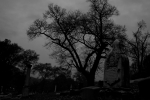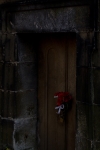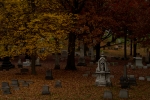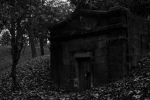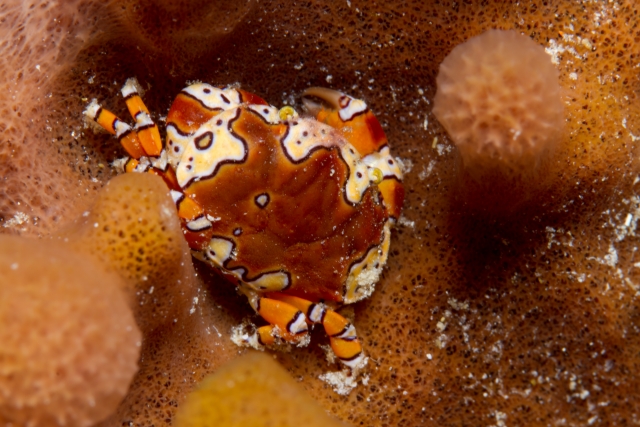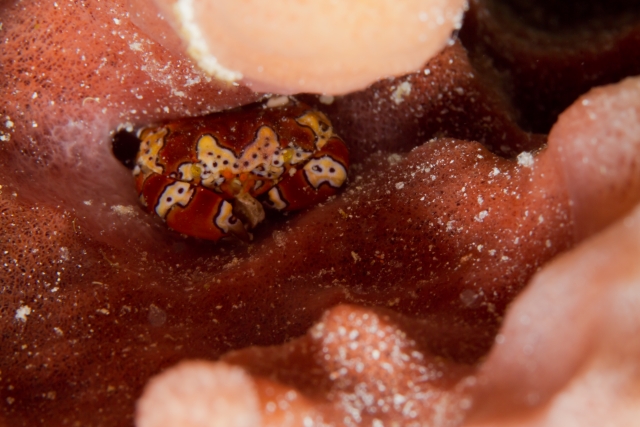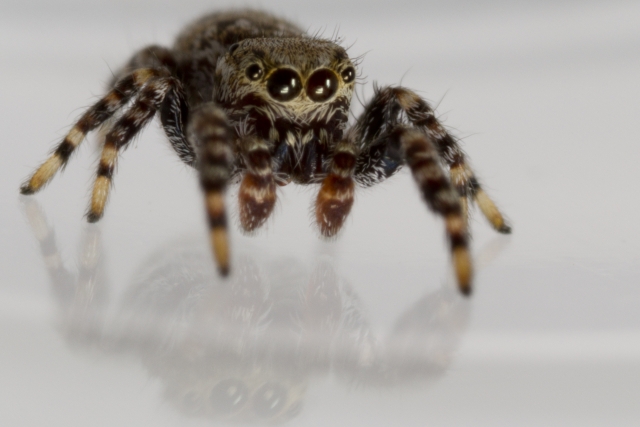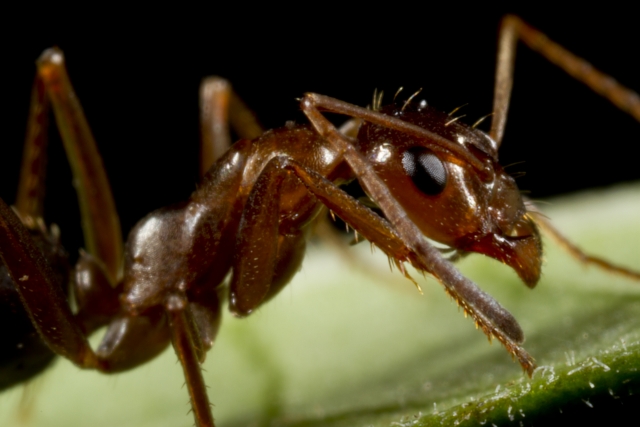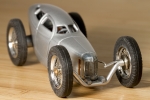Happy Halloween 2012
ktuli — Tue, 10/30/2012 - 18:12
Ok - a quick break from the dive photography today.
Last Saturday, I led a MeetUp event to the Allegheny Cemetery. The idea was to get some spooky photography for Halloween, so here's a selection of what I came back with...
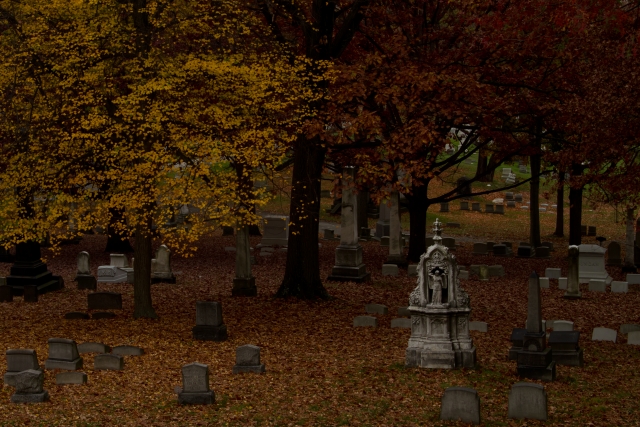
Happy Halloween!
- Bill
Turks and Caicos Explorer: Caribbean Reef Sharks (part 1)
ktuli — Mon, 10/29/2012 - 20:10
Ok - as I hinted at yesterday, I really struggled early in the week.
One of my mistakes was a classic bit of photographer hubris in that I thought I knew enough that adding a new piece of gear to my setup wouldn't be an issue and I'd just pick it up like a fish to water (sorry - terrible pun, I know!). Well, adding a second strobe to my setup certainly was not something I could do without first needing to learn some things - I should have tried out some dry photography with it in the housing and both strobes mounted before going on the trip.
The second issue I had was that there was quite a bit of rust build up. It had been a year since I'd done underwater photography (far too long!), and it took me a while to reacquaint myself with the setup and to remember what settings worked and which didn't. Again, some dry photography might have helped a little, but also just looking at old photos and seeing what worked and what settings were used would have gone a long way.
And the last issue was that despite knowing better, I was using the camera in a way that it just wasn't meant to operated. In particular, with the 100mm macro lens mounted, I certainly could focus on larger subjects that were a ways off, but I really shouldn't have been doing so. I know to reduce the water between me and my subject, and I know the ugly results I get when I fail to do so.
Despite that, and with a liberal amount of Photoshop work, here is my first set of Caribbean Reef Shark (Carcharhinus perezii) from the trip. Hopefully I have better ones to share later...
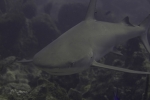 |
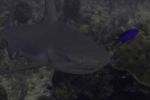 |
 |
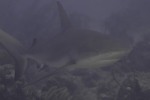 |
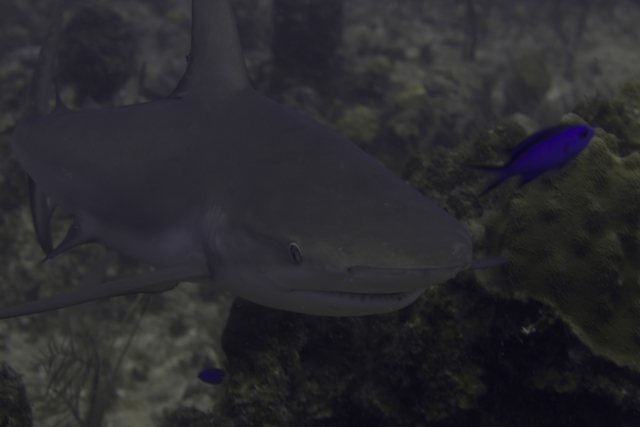 |
|||
Technical Data: Canon EOS 7D, Canon EF 100mm f/2.8L Macro IS USM, 1/200th sec at f/8. Image Stabilization on. ISO 320. Ikelite Housing and Port with dual Ikelite 161 Strobes in TTL Mode. Raw conversion in Photoshop CS5, Color cast removed in Photoshop Elements 9.
I kept these not only because I was able to partially salvage them, but also because I felt these were the first dives we were on where we saw "real" sharks. I know the nurse sharks we've seen before are quite real (and potentially dangerous in the wrong situation - ie: diver stupidity), but these are the first sharks with that classic shark body shape, and they weren't tiny little things... the ones we saw all week ranged in size from 6-10 feet long, and were bulky in weight to match... and fast. Just watching them swim was a treat - being in the water with such a beautiful creature and not being afraid (ok - mostly not afraid) of it was completely incredible.
- Bill
Turks and Caicos Explorer: Gaudy Clown Crab
ktuli — Sun, 10/28/2012 - 20:06
I normally don't like to do this when processing photos, but I've decided to bounce around and pick and choose the order I process the photos from our last dive trip. One reason for this is that I was really struggling early in the week (more on that later), and so to get to the better photos, I have to jump ahead.
Another reason is that I am much more excited to share some of the subjects later in the week. Today's subject is just that.
This is a Gaudy Clown Crab (Platypodiella spectabilis). According to my ID book, these are listed as "occasional", but this is the first one I have ever seen, and when the captain of our boat asked me if I could find it again because he had never managed to get a good photo of one before (not sure if he'd seen one before or not), I felt really pleased with myself for having found it. Keep in mind, they only get to a maximum of 3/4 inch in size...
Technical Data: Canon EOS 7D, Canon EF 100mm f/2.8L Macro IS USM, 1/120th sec at f/16. Image Stabilization on. ISO 100. Ikelite Housing and Port with Ikelite 161 Strobe in TTL Mode. Raw conversion in Photoshop CS5.
So while I felt finding one of these crabs was an accomplishment, I took the challenge to find another on the following dive. I spent the entire dive searching barrel sponge after barrel sponge. And while I'm not 100% sure if this is the same crab or second one (I've tried matching the patterns, and can't come to a decision on it), I am very impressed that I was able to locate one of these crabs for the captain. Unfortunately, as you can see - it wasn't in as good of a location to photograph, so he'll likely have to keep looking... :(
Technical Data: Canon EOS 7D, Canon EF 100mm f/2.8L Macro IS USM, 1/120th sec at f/16. Image Stabilization on. ISO 100. Ikelite Housing and Port with Ikelite 161 Strobe in TTL Mode. Raw conversion in Photoshop CS5.
This is why I love diving... finding these beautiful little creatures that most people have never seen before.... and then doing it again.
- Bill
Turks and Caicos Explorer: Swim with Abby
ktuli — Wed, 10/24/2012 - 18:57
What up, fishes?
Ok! We're home from yet another fantastic scuba trip. This was quite the trip - lots of sharks, coral fluorescence, macro and wide-angle photography, our 100th dives, and.... video!
Technical Data: Canon EOS 7D, Canon EF-S 18-55mm f/3.5-5.6 II. Ikelite Housing and Port with dual Ikelite 161 Strobes in Video Light mode.
It is going to take me a little while to get through all the photos, so I figured I'd share a video to start things off. This friendly little (about 4 foot) nurse shark is lovingly named Abigale or Abby by the crew of our boat - the Turks and Caicos Explorer II. She visited us on many dives towards the end of the week while we were in French Cay, so I took this opportunity to follow her for a short swim.
Stay tuned as I have tons of photos and more videos to share!
- Bill
Reflecting on my Spider Photos
ktuli — Wed, 10/03/2012 - 14:29
I know I've been a bit lax in posting recently. I have been trying to get the gallery system upgraded to the latest version and that has been proving less than simple. On top of that, I've had a backlog of photos to process - today's is one of them.
I recently noticed that at the right angle, the containers I use to catch these jumping spiders in produce a nice soft reflection of the spider. There are some distracting elements (note the while line through the reflection). This shot is a fairly aggressive crop to highlight the spider and reflection while eliminating those distracting elements as much as possible...
Technical Data: Canon EOS 7D, Canon MP-E 65mm f/2.8 1-5x Macro, 1/250 sec at f/13. Canon Macro Twin Lite MT-24EX in ETTL mode. ISO 100. RAW processing and cropped in Adobe Camera Raw.
- Bill
Trashline Spider
ktuli — Wed, 09/26/2012 - 18:27
As the weather gets colder, it will be harder and harder to find spiders... but you know I'll keep looking. We've had one of these interesting spiders living on our shed all summer, so when I saw this one with the nice background, I figured I needed to get a shot of it.
These spiders are called trashline for obvious reasons, and it is used as a form of camouflage - to great effect.
Technical Data: Canon EOS 7D, Canon MP-E 65mm f/2.8 1-5x Macro, 1/25 sec at f/14. Canon Macro Twin Lite MT-24EX in ETTL mode. ISO 1250. RAW processing in Adobe Camera Raw.
The species is Cyclosa conica which is in reference to its cone shaped abdomen, and it is one of the things that actually helps one to spot this spider on its web. As it hides among its 'trash' (which is the remains of its previous meals), it blends in almost perfectly.
Such a cool spider...
- Bill
California Trip: Yosemite National Park (part 4)
ktuli — Sat, 09/22/2012 - 20:54
And to wrap up (at least for now, I might revisit some of the photos in the set in the future), here is a set of night photography in Yosemite.
 |
 |
 |
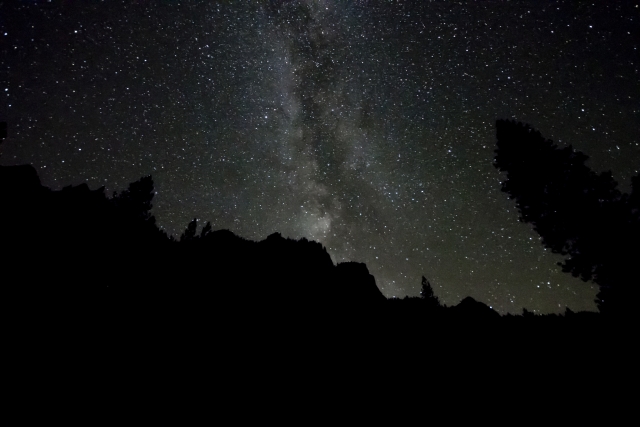 |
||
If the one looks familiar, it is the same photo I used as a sneak peak, but I've gone ahead and fixed the yellow color cast that was showing up to light pollution.
- Bill
California Trip: Yosemite National Park (part 3)
ktuli — Thu, 09/20/2012 - 19:06
This photo is one that I am really pleased with how it turned out. Our last night in Yosemite, we stopped at Tunnel View (remember that from the other day?) and I took some last photos of the valley with the Milky Way above (more on those later).
As I turned around to head back to the car, I saw this scene and knew it would make for an interesting image. Well - to be honest, I didn't see it exactly like this - that would have been impossible. Instead, I was able to visualize how an extended exposure would make the tunnel look against the dark sky. I knew that the exposure time I would need to make the sky visible would cause the lights inside the tunnel to over-expose or "blow out".
The scene ended up looking almost exactly like I expected it to... and when I look at it, it has a very primordial feel to it - almost like that cave contains a burning fire like a volcano, ready to spew forth new life. Almost like Middle Earth existed in Yosemite...
Technical Data: Canon EOS 7D, Sigma 10-20mm f/4-5.6 EX DC HSM AF at 10mm, 7 sec at f/4. ISO 12800. Raw conversion Adobe Camera Raw with additional edits in Photoshop CS5.
I'm not normally one for titles on my photos, but something tells me that this one deserves one... I just don't know what would work. Any suggestions?
- Bill
Hummingbird Rescue
ktuli — Wed, 09/19/2012 - 19:05
Today during my lunch break, I was walking to the bank to take care of some business there. As I walked down the sidewalk, I noticed something laying there, and as I got closer, I quickly realized it was a hummingbird!
Seeing that it wasn't moving well, I decided to pick it up and relocate it somewhere more appropriate. I was hoping that it was just cold and once I moved it into the sun, it could warm up and fly again.
So it very cooperatively let me scoop it up and sat quietly while I walked it to a better location (I was going to see if it would sit in a tree in the sunshine). As I held it in the sunlight, I could visibly see it start to perk up - it became more alert and was watching me intently, it start holding its wings in a normal position, and most amazingly... I could feel its heartbeat getting faster!
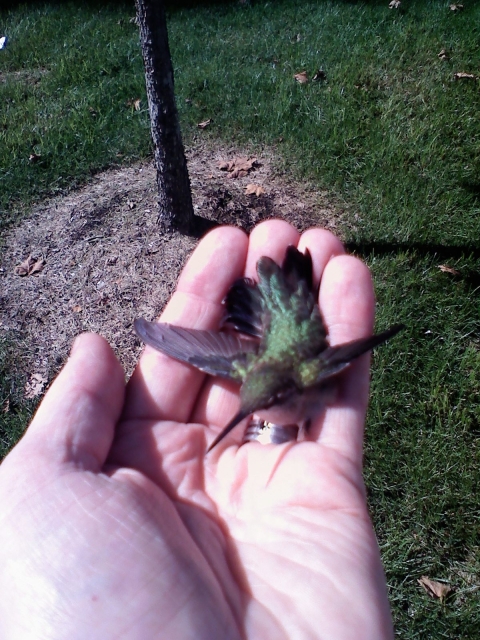
After a few minutes, it was sufficiently warmed up that it tried a test flight, but needed some more rest, so returned to my hand. It sat there a few more minutes and then took off and flew away - hopefully it makes it to a warmer location and doesn't get itself into any more trouble...
Unfortunately the photos could only be taken with my cell phone, so the quality sucks... but the experience is one I won't soon forget.
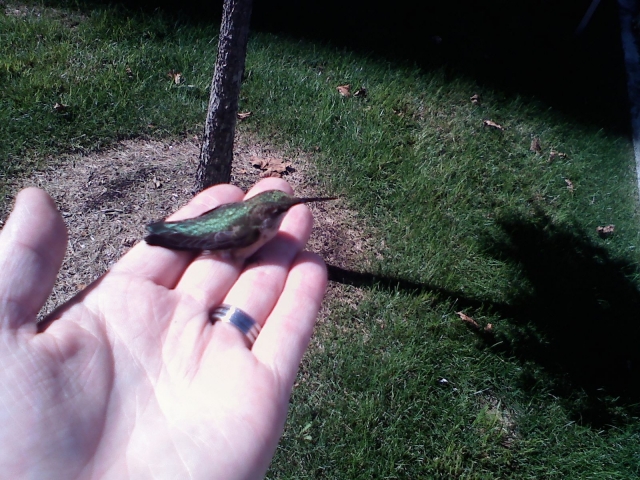
Pretty cool, huh?
- Bill
Super Macro Ant
ktuli — Mon, 09/17/2012 - 20:33
Ok - a brief break from the Yosemite photos (mainly because I need to process more of them) to share a super macro shot I did of an ant during this past week's MeetUp Macro Shootout that I hosted out at South Park...
Technical Data: Canon EOS 7D, Canon MP-E 65mm f/2.8 1-5x Macro, 1/160 sec at f/16. Canon Macro Twin Lite MT-24EX in ETTL mode. ISO 100. RAW processing in Adobe Camera Raw.
Not necessarily a view you get of an ant every day. I normally can't get shots like this because ants rarely hold still, but it was fairly early and somewhat chilly that morning, so this ant was quite sluggish which allowed me to get several shots of it.
- Bill

